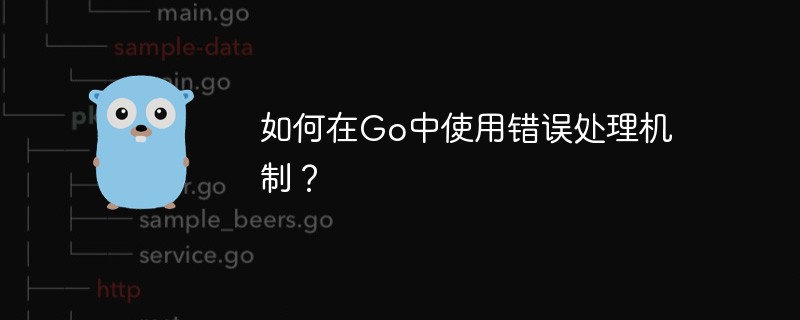
Tomcat middleware is a very popular Java application server that is widely used to deploy and run Java web applications. This article will delve into the core principles and mechanisms of Tomcat middleware and help readers better understand through specific code examples.
1. Introduction to Tomcat
Tomcat is an open source Java Servlet container developed by the Apache Software Foundation. It implements standards such as Java Servlet, JavaServer Pages (JSP) and Java WebSocket, and provides an HTTP server. features and supports integration with the Apache web server. As a lightweight Web container, Tomcat is widely used in the Internet field and is widely used to develop and deploy Java Web applications.
2. Tomcat’s core principles and mechanisms
- Threading model
Tomcat adopts a multi-threading model to support concurrent request processing. When Tomcat receives an HTTP request, it creates a worker thread through the thread pool to handle the request. This thread pool management method can effectively improve concurrent processing capabilities and reduce the overhead of thread creation and destruction. - Life cycle management
Components in Tomcat (such as Server, Service, Connector, Container, etc.) have their own life cycle management mechanism. For example, a container (Container) will call the start() method of its sub-container when it is started, thereby recursively starting the entire container hierarchy. This life cycle management mechanism enables Tomcat to flexibly manage and control the status of each component. - Request processing process
When Tomcat receives an HTTP request, it will distribute the request to the appropriate Connector through the balancer (Balancer). The Connector is responsible for establishing a connection with the client and passing the request data to the appropriate Container for processing. The Container matches the appropriate Servlet according to the requested URL path and processes it through the Servlet. After processing, the Container returns the response data to the Connector, and the Connector finally returns the response result to the client.
3. Specific code examples
The following uses a simple code example to demonstrate the core principles and mechanisms of Tomcat.
-
Write Servlet
public class HelloServlet extends HttpServlet { protected void doGet(HttpServletRequest request, HttpServletResponse response) throws ServletException, IOException { response.setContentType("text/html"); PrintWriter out = response.getWriter(); out.println("<html><body>"); out.println("<h1 id="Hello-Tomcat">Hello, Tomcat!</h1>"); out.println("</body></html>"); } } -
Configure web.xml
<web-app> <servlet> <servlet-name>HelloServlet</servlet-name> <servlet-class>com.example.HelloServlet</servlet-class> </servlet> <servlet-mapping> <servlet-name>HelloServlet</servlet-name> <url-pattern>/hello</url-pattern> </servlet-mapping> </web-app> - Deploy to Tomcat
Will be written The Servlet class and web.xml file are packaged into a war package, and the war package is deployed to Tomcat's webapps directory. - Start Tomcat
Start the Tomcat server by executing the Tomcat startup script. - Access HelloServlet
Open the browser and enter http://localhost:8080/application name/hello in the address bar to access HelloServlet and display "Hello, Tomcat!" on the page.
Through the above examples, we can see the core principles and mechanisms of Tomcat, that is, the process of receiving and processing HTTP requests. From the code example, we can see that Tomcat processes the request through Servlet and returns the response result to the client. This process is one of the core mechanisms of Tomcat middleware.
To sum up, Tomcat middleware, as an excellent Java application server, has been widely used in the Internet field. Through in-depth analysis of the core principles and mechanisms of Tomcat, as well as specific code examples, we can better understand the working mechanism of Tomcat, and can use Tomcat more flexibly to develop and deploy Java Web applications.
The above is the detailed content of In-depth study of the key principles and mechanisms of Tomcat middleware. For more information, please follow other related articles on the PHP Chinese website!
 深入了解CSS布局重新计算和渲染的机制Jan 26, 2024 am 09:11 AM
深入了解CSS布局重新计算和渲染的机制Jan 26, 2024 am 09:11 AMCSS回流(reflow)和重绘(repaint)是网页性能优化中非常重要的概念。在开发网页时,了解这两个概念的工作原理,可以帮助我们提高网页的响应速度和用户体验。本文将深入探讨CSS回流和重绘的机制,并提供具体的代码示例。一、CSS回流(reflow)是什么?当DOM结构中的元素发生可视性、尺寸或位置改变时,浏览器需要重新计算并应用CSS样式,然后重新布局
 深入探讨Golang变量的存储位置和机制Feb 28, 2024 pm 09:45 PM
深入探讨Golang变量的存储位置和机制Feb 28, 2024 pm 09:45 PM标题:深入探讨Golang变量的存储位置和机制随着Go语言(Golang)在云计算、大数据和人工智能领域的应用逐渐增多,深入了解Golang变量的存储位置和机制变得尤为重要。在本文中,我们将详细探讨Golang中变量的内存分配、存储位置以及相关的机制。通过具体代码示例,帮助读者更好地理解Golang变量在内存中是如何存储和管理的。1.Golang变量的内存
 PHP中的自动加载机制Jun 18, 2023 pm 01:11 PM
PHP中的自动加载机制Jun 18, 2023 pm 01:11 PM随着PHP语言越来越受欢迎,开发人员需要使用越来越多的类和函数。当项目规模扩大时,手动引入所有依赖项将变得不切实际。这时候就需要一种自动加载机制来简化代码开发和维护过程。自动加载机制是一种PHP语言的特性,可以在运行时自动载入所需的类和接口,并减少手动的类文件引入。这样,程序员可以专注于开发代码,减少因繁琐的手动类引入而产生的错误和时间浪费。在PHP中,一般
 如何在Go中使用错误处理机制?May 11, 2023 pm 04:45 PM
如何在Go中使用错误处理机制?May 11, 2023 pm 04:45 PMGo语言作为一门强类型、高效、现代化的编程语言,在现代软件开发中得到了越来越广泛的应用。其中,错误处理机制是Go语言值得关注的一个方面,而Go语言的错误处理机制相比于其他编程语言也有很大的不同和优越性。本文将介绍Go语言的错误处理机制的基本概念、实现方式以及最佳实践,以帮助读者更好地理解和使用Go语言中的错误处理机制。一、Go语言错误处理机制的基本概念在Go
 PHP中的隐式转换机制解析Mar 09, 2024 am 08:00 AM
PHP中的隐式转换机制解析Mar 09, 2024 am 08:00 AMPHP中的隐式转换机制解析在PHP编程中,隐式转换是指在不显式指定类型转换的情况下,PHP自动将一个数据类型转换为另一个数据类型的过程。隐式转换机制在编程中非常常见,但也容易造成一些意想不到的bug,因此了解隐式转换机制的原理和规则对于编写稳健的PHP代码非常重要。1.整型与浮点型之间的隐式转换在PHP中,整型和浮点型之间的隐式转换是非常常见的。当一个整型
 深入解析Tomcat中间件的运行机制和内部工作原理Dec 28, 2023 pm 01:20 PM
深入解析Tomcat中间件的运行机制和内部工作原理Dec 28, 2023 pm 01:20 PM解密Tomcat中间件的运行机制和内部工作原理摘要:Tomcat是一个广泛用于JavaWeb应用程序的开源HTTP服务器和Servlet容器。它提供了丰富的功能,如处理HTTP请求、管理Web应用程序和Servlet生命周期管理等。本文将深入探讨Tomcat中间件的运行机制和内部工作原理,包括掌握Tomcat的核心组件、请求处理流程、类加载机制、Servl
 Go 语言中的内存管理机制是怎样的?Jun 10, 2023 pm 04:04 PM
Go 语言中的内存管理机制是怎样的?Jun 10, 2023 pm 04:04 PMGo语言是一门广泛用于系统级编程的高效编程语言,其主要优势之一是其内存管理机制。Go语言内建的垃圾回收机制(GarbageCollection,简称GC)使得程序员不必亲自进行内存分配和释放操作,提高了开发效率和代码质量。本文将对Go语言中的内存管理机制进行详细介绍。一、Go内存分配在Go语言中,内存分配使用了两个堆区:小对象堆(small
 Go语言垃圾回收机制详解Mar 26, 2024 pm 02:42 PM
Go语言垃圾回收机制详解Mar 26, 2024 pm 02:42 PMGo语言(也称为Golang)是谷歌开发的一种高效的编程语言,具有并发性和垃圾回收机制等特点。本文将详细解释Go语言中的垃圾回收机制,包括其原理、实现方式以及代码示例。1.垃圾回收原理Go语言的垃圾回收机制是通过“标记-清除”算法实现的。在程序运行过程中,Go运行时会在堆中跟踪哪些对象是可以被访问的(被标记),而哪些对象是无法被访问的,即垃圾数据(需要清除


Hot AI Tools

Undresser.AI Undress
AI-powered app for creating realistic nude photos

AI Clothes Remover
Online AI tool for removing clothes from photos.

Undress AI Tool
Undress images for free

Clothoff.io
AI clothes remover

AI Hentai Generator
Generate AI Hentai for free.

Hot Article

Hot Tools

VSCode Windows 64-bit Download
A free and powerful IDE editor launched by Microsoft

SublimeText3 Mac version
God-level code editing software (SublimeText3)

EditPlus Chinese cracked version
Small size, syntax highlighting, does not support code prompt function

MantisBT
Mantis is an easy-to-deploy web-based defect tracking tool designed to aid in product defect tracking. It requires PHP, MySQL and a web server. Check out our demo and hosting services.

mPDF
mPDF is a PHP library that can generate PDF files from UTF-8 encoded HTML. The original author, Ian Back, wrote mPDF to output PDF files "on the fly" from his website and handle different languages. It is slower than original scripts like HTML2FPDF and produces larger files when using Unicode fonts, but supports CSS styles etc. and has a lot of enhancements. Supports almost all languages, including RTL (Arabic and Hebrew) and CJK (Chinese, Japanese and Korean). Supports nested block-level elements (such as P, DIV),







